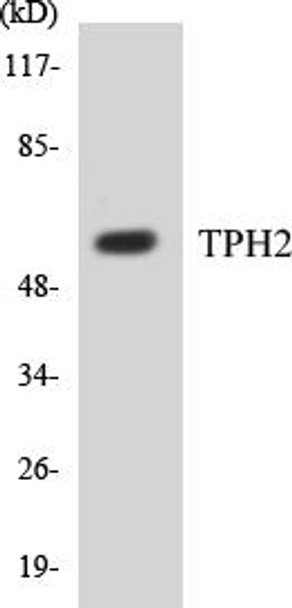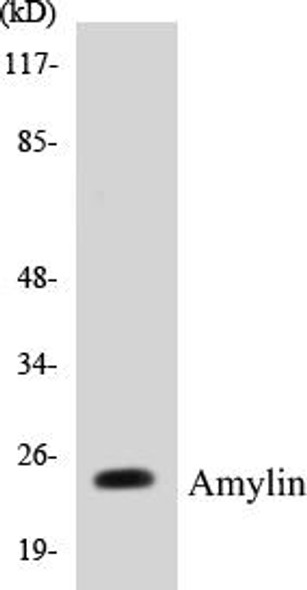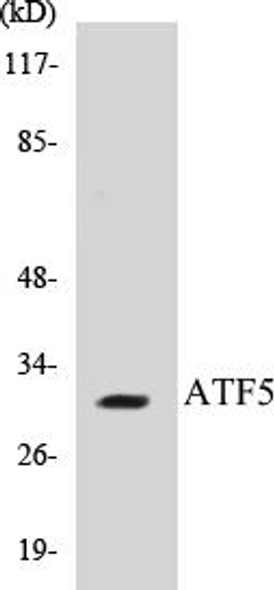Description
TPH2 Colorimetric Cell-Based ELISA Kit
The TPH2 Colorimetric Cell-Based ELISA Kit is specifically designed for the quantitative detection of Tryptophan Hydroxylase 2 (TPH2) levels in cell lysates, serum, plasma, and other biological fluids. This kit offers exceptional sensitivity and specificity, providing accurate and reliable results for your research needs.TPH2 is a crucial enzyme involved in the synthesis of serotonin, a neurotransmitter that plays a key role in regulating mood, behavior, and mental health. Dysregulation of TPH2 activity has been implicated in various psychiatric disorders such as depression, anxiety, and schizophrenia, making it an important target for therapeutic interventions.
With the TPH2 Colorimetric Cell-Based ELISA Kit, researchers can confidently measure TPH2 levels in biological samples, allowing for a better understanding of serotonin biosynthesis and its implications on mental health. This kit is an invaluable tool for studying neurobiology, psychiatric disorders, and drug development efforts aimed at modulating serotonin levels in the brain.
| Product Name: | TPH2 Colorimetric Cell-Based ELISA |
| Product Code: | CBCAB00890 |
| ELISA Type: | Cell-Based |
| Target: | TPH2 |
| Reactivity: | Human, Mouse, Rat |
| Dynamic Range: | > 5000 Cells |
| Detection Method: | Colorimetric 450 nmStorage/Stability:4°C/6 Months |
| Format: | 96-Well Microplate |
The TPH2 Colorimetric Cell-Based ELISA Kit is a convenient, lysate-free, high throughput and sensitive assay kit that can detect TPH2 protein expression profile in cells. The kit can be used for measuring the relative amounts of TPH2 in cultured cells as well as screening for the effects that various treatments, inhibitors (ie siRNA or chemicals), or activators have on TPH2.
Qualitative determination of TPH2 concentration is achieved by an indirect ELISA format. In essence, TPH2 is captured by TPH2-specific primary antibodies while the HRP-conjugated secondary antibodies bind the Fc region of the primary antibody. Through this binding, the HRP enzyme conjugated to the secondary antibody can catalyze a colorimetric reaction upon substrate addition. Due to the qualitative nature of the Cell-Based ELISA, multiple normalization methods are needed:
| 1. | A monoclonal antibody specific for human GAPDH is included to serve as an internal positive control in normalizing the target absorbance values. |
| 2. | Following the colorimetric measurement of HRP activity via substrate addition, the Crystal Violet whole-cell staining method may be used to determine cell density. After staining, the results can be analysed by normalizing the absorbance values to cell amounts, by which the plating difference can be adjusted. |
| Database Information: | Gene ID: 121278, UniProt ID: Q8IWU9, OMIM: 607478/608516, Unigene: Hs.376337 |
| Gene Symbol: | TPH2 |
| Sub Type: | None |
| UniProt Protein Function: | TPH2: an enzyme that is rate-limiting in the biosynthesis of serotonin. It catalyzes the biopterin dependent monooxygenation of tryptophan to 5-hydroxytryptophan (5HT), which is subsequently decarboxylated to form the neurotransmitter serotonin. Its expression is limited to a few specialized tissues: raphe neurons, pinealocytes, mast cells, mononuclear leukocytes, beta-cells of the islets of Langerhans, and intestinal and pancreatic enterochromaffin cells. Two alternatively spliced isoforms have been described. Isoform 2 appears to be expressed exclusively in the brain, and is expressed at significantly higher levels in the raphe nuclei than isoform 1. |
| UniProt Protein Details: | Protein type:Oxidoreductase; EC 1.14.16.4; Amino Acid Metabolism - tryptophan Chromosomal Location of Human Ortholog: 12q21.1 Cellular Component: cytosol Biological Process: indolalkylamine biosynthetic process Disease: Attention Deficit-hyperactivity Disorder, Susceptibility To, 7; Major Depressive Disorder |
| NCBI Summary: | This gene encodes a member of the pterin-dependent aromatic acid hydroxylase family. The encoded protein catalyzes the first and rate limiting step in the biosynthesis of serotonin, an important hormone and neurotransmitter. Mutations in this gene may be associated with psychiatric diseases such as bipolar affective disorder and major depression. [provided by RefSeq, Feb 2016] |
| UniProt Code: | Q8IWU9 |
| NCBI GenInfo Identifier: | 30580625 |
| NCBI Gene ID: | 121278 |
| NCBI Accession: | Q8IWU9.1 |
| UniProt Secondary Accession: | Q8IWU9,Q14CB0, A6NGA4, |
| UniProt Related Accession: | Q8IWU9 |
| Molecular Weight: | 56,242 Da |
| NCBI Full Name: | Tryptophan 5-hydroxylase 2 |
| NCBI Synonym Full Names: | tryptophan hydroxylase 2 |
| NCBI Official Symbol: | TPH2 |
| NCBI Official Synonym Symbols: | NTPH; ADHD7 |
| NCBI Protein Information: | tryptophan 5-hydroxylase 2 |
| UniProt Protein Name: | Tryptophan 5-hydroxylase 2 |
| UniProt Synonym Protein Names: | Neuronal tryptophan hydroxylase; Tryptophan 5-monooxygenase 2 |
| Protein Family: | Tryptophan 5-hydroxylase |
| UniProt Gene Name: | TPH2 |
| UniProt Entry Name: | TPH2_HUMAN |
| Component | Quantity |
| 96-Well Cell Culture Clear-Bottom Microplate | 2 plates |
| 10X TBS | 24 mL |
| Quenching Buffer | 24 mL |
| Blocking Buffer | 50 mL |
| 15X Wash Buffer | 50 mL |
| Primary Antibody Diluent | 12 mL |
| 100x Anti-Phospho Target Antibody | 60 µL |
| 100x Anti-Target Antibody | 60 µL |
| Anti-GAPDH Antibody | 60 µL |
| HRP-Conjugated Anti-Rabbit IgG Antibody | 12 mL |
| HRP-Conjugated Anti-Mouse IgG Antibody | 12 mL |
| SDS Solution | 12 mL |
| Stop Solution | 24 mL |
| Ready-to-Use Substrate | 12 mL |
| Crystal Violet Solution | 12 mL |
| Adhesive Plate Seals | 2 seals |
The following materials and/or equipment are NOT provided in this kit but are necessary to successfully conduct the experiment:
- Microplate reader able to measure absorbance at 450 nm and/or 595 nm for Crystal Violet Cell Staining (Optional)
- Micropipettes with capability of measuring volumes ranging from 1 µL to 1 ml
- 37% formaldehyde (Sigma Cat# F-8775) or formaldehyde from other sources
- Squirt bottle, manifold dispenser, multichannel pipette reservoir or automated microplate washer
- Graph paper or computer software capable of generating or displaying logarithmic functions
- Absorbent papers or vacuum aspirator
- Test tubes or microfuge tubes capable of storing ≥1 ml
- Poly-L-Lysine (Sigma Cat# P4832 for suspension cells)
- Orbital shaker (optional)
- Deionized or sterile water
*Note: Protocols are specific to each batch/lot. For the correct instructions please follow the protocol included in your kit.
| Step | Procedure |
| 1. | Seed 200 µL of 20,000 adherent cells in culture medium in each well of a 96-well plate. The plates included in the kit are sterile and treated for cell culture. For suspension cells and loosely attached cells, coat the plates with 100 µL of 10 µg/ml Poly-L-Lysine (not included) to each well of a 96-well plate for 30 minutes at 37°C prior to adding cells. |
| 2. | Incubate the cells for overnight at 37°C, 5% CO2. |
| 3. | Treat the cells as desired. |
| 4. | Remove the cell culture medium and rinse with 200 µL of 1x TBS, twice. |
| 5. | Fix the cells by incubating with 100 µL of Fixing Solution for 20 minutes at room temperature. The 4% formaldehyde is used for adherent cells and 8% formaldehyde is used for suspension cells and loosely attached cells. |
| 6. | Remove the Fixing Solution and wash the plate 3 times with 200 µL 1x Wash Buffer for five minutes each time with gentle shaking on the orbital shaker. The plate can be stored at 4°C for a week. |
| 7. | Add 100 µL of Quenching Buffer and incubate for 20 minutes at room temperature. |
| 8. | Wash the plate 3 times with 1x Wash Buffer for 5 minutes each time. |
| 9. | Add 200 µL of Blocking Buffer and incubate for 1 hour at room temperature. |
| 10. | Wash 3 times with 200 µL of 1x Wash Buffer for 5 minutes each time. |
| 11. | Add 50 µL of 1x primary antibodies (Anti-TPH2 Antibody and/or Anti-GAPDH Antibody) to the corresponding wells, cover with Parafilm and incubate for 16 hours (overnight) at 4°C. If the target expression is known to be high, incubate for 2 hours at room temperature. |
| 12. | Wash 3 times with 200 µL of 1x Wash Buffer for 5 minutes each time. |
| 13. | Add 50 µL of 1x secondary antibodies (HRP-Conjugated AntiRabbit IgG Antibody or HRP-Conjugated Anti-Mouse IgG Antibody) to corresponding wells and incubate for 1.5 hours at room temperature. |
| 14. | Wash 3 times with 200 µL of 1x Wash Buffer for 5 minutes each time. |
| 15. | Add 50 µL of Ready-to-Use Substrate to each well and incubate for 30 minutes at room temperature in the dark. |
| 16. | Add 50 µL of Stop Solution to each well and read OD at 450 nm immediately using the microplate reader. |
(Additional Crystal Violet staining may be performed if desired – details of this may be found in the kit technical manual.)






